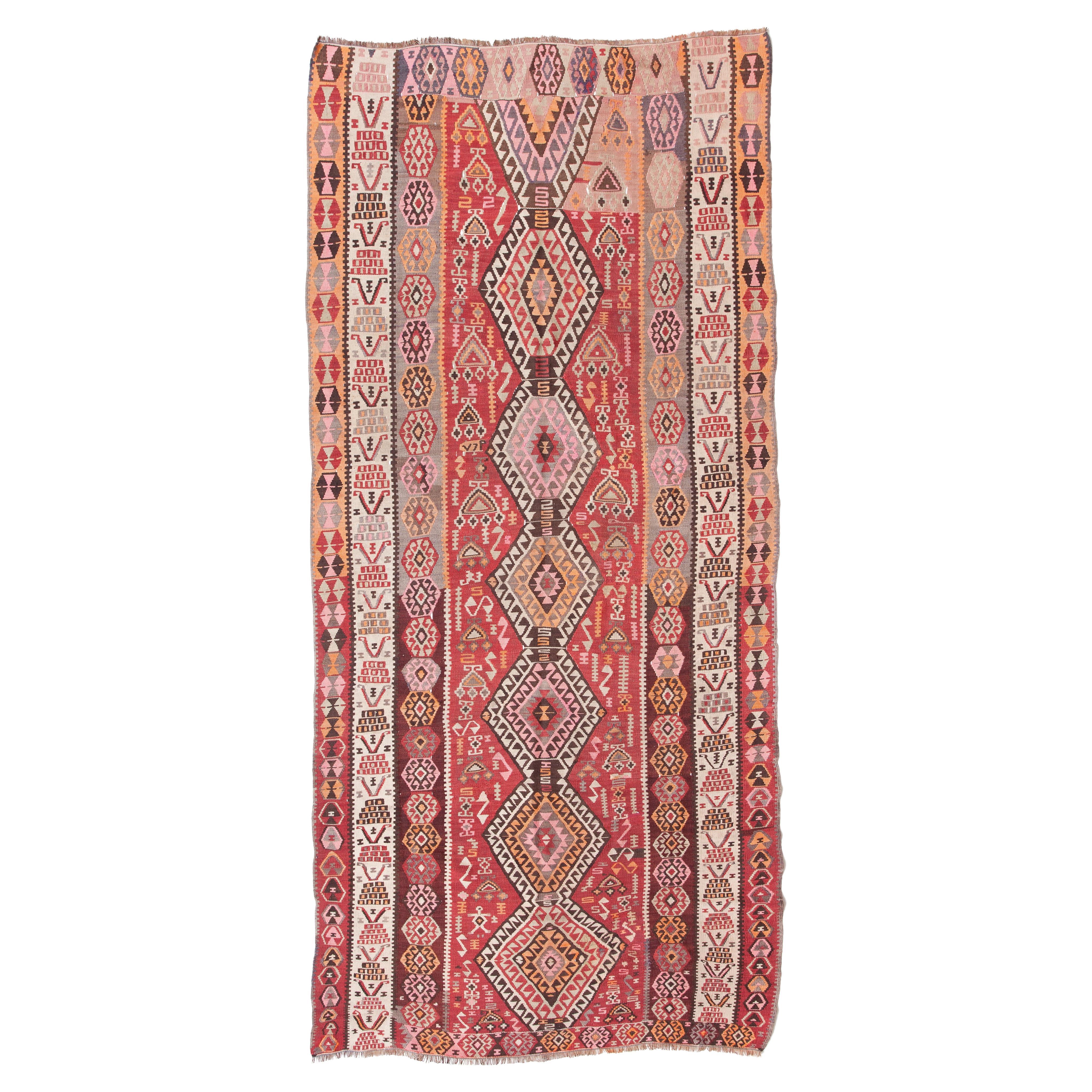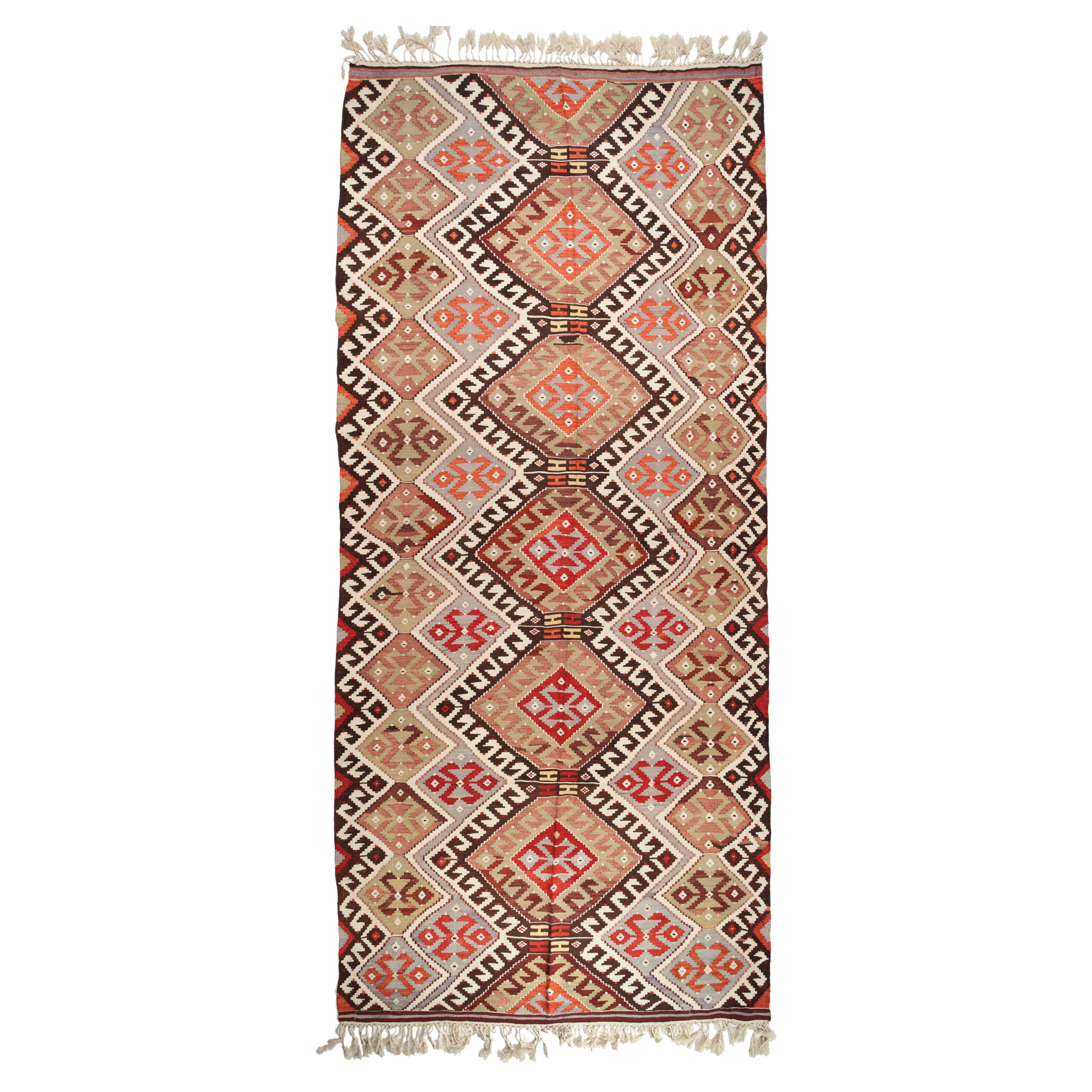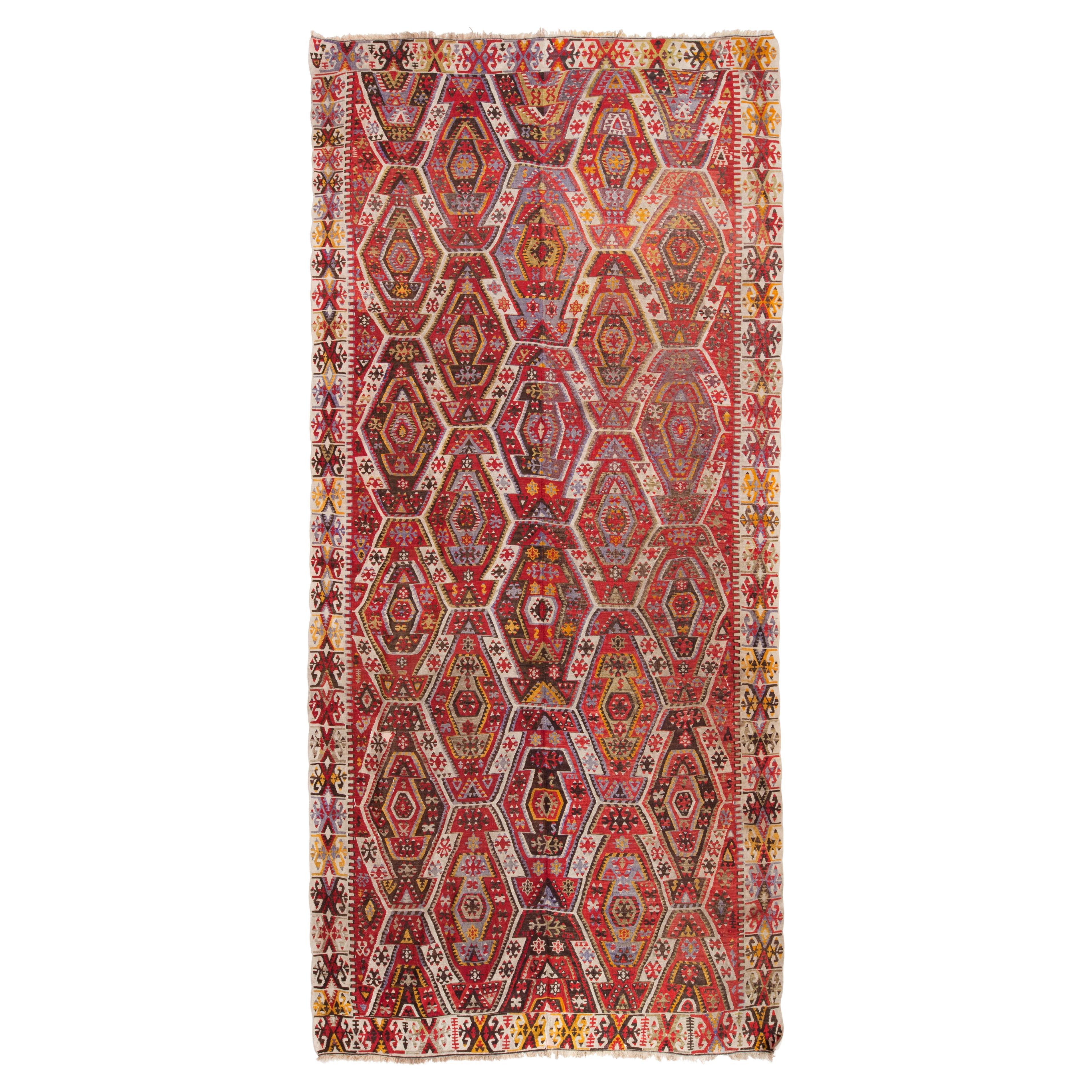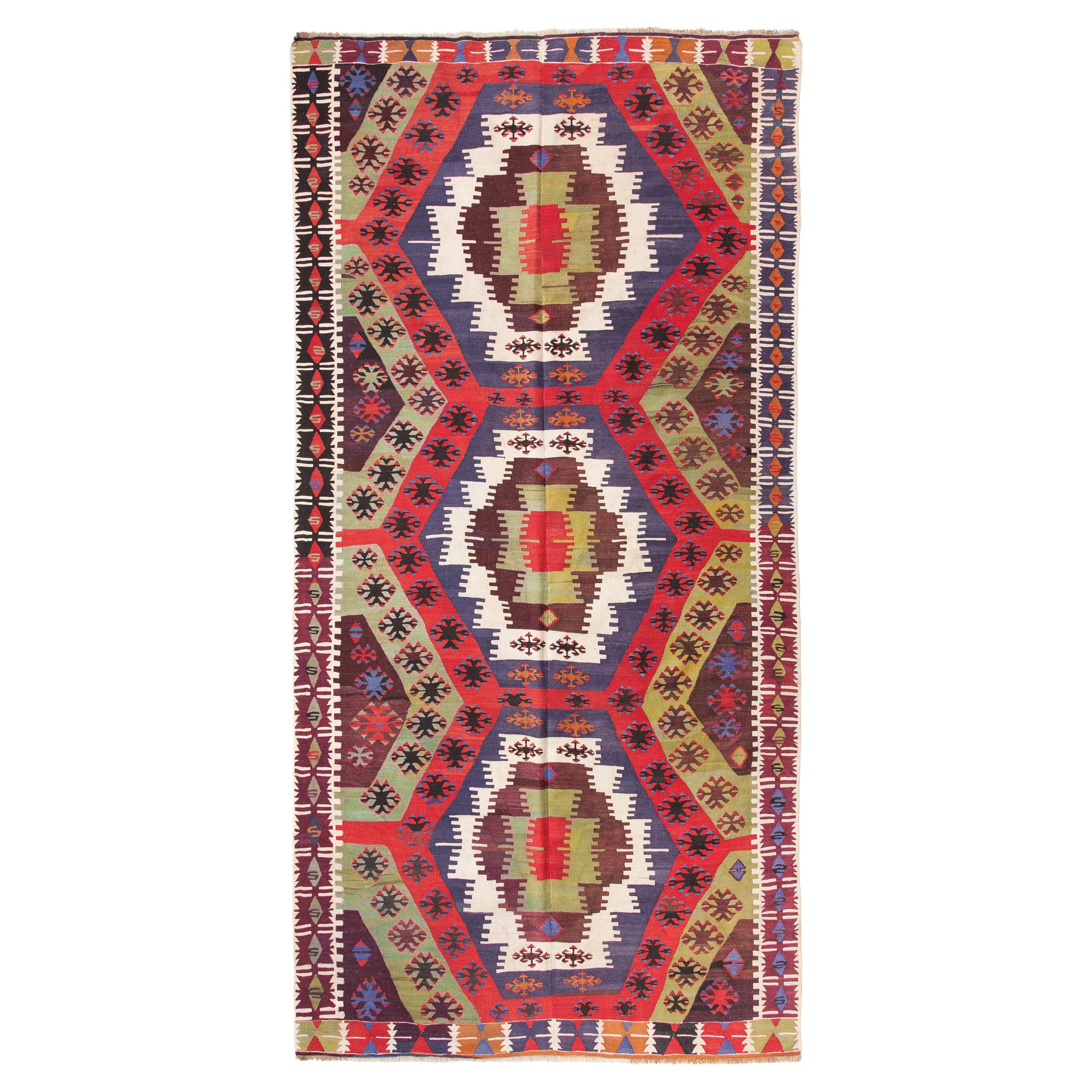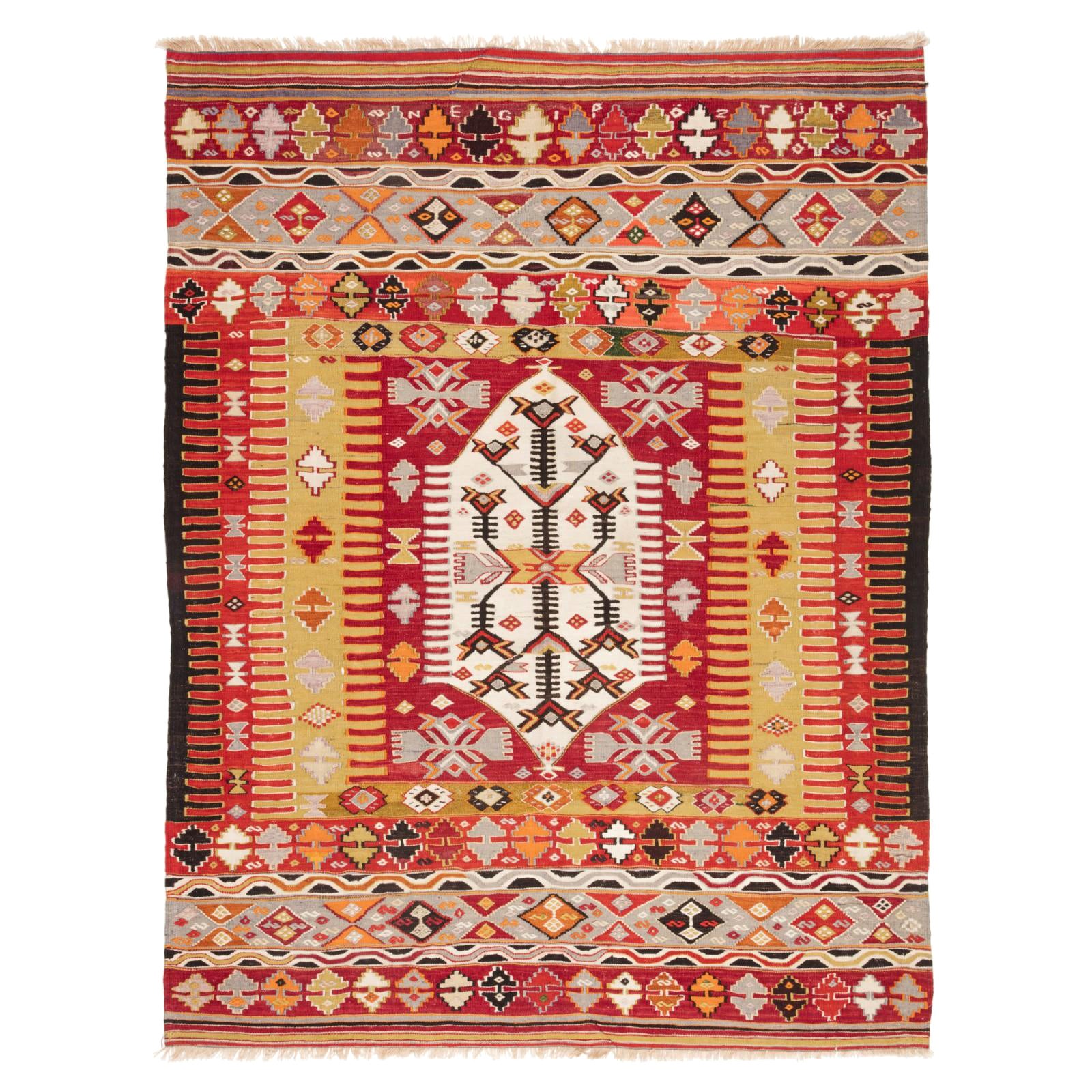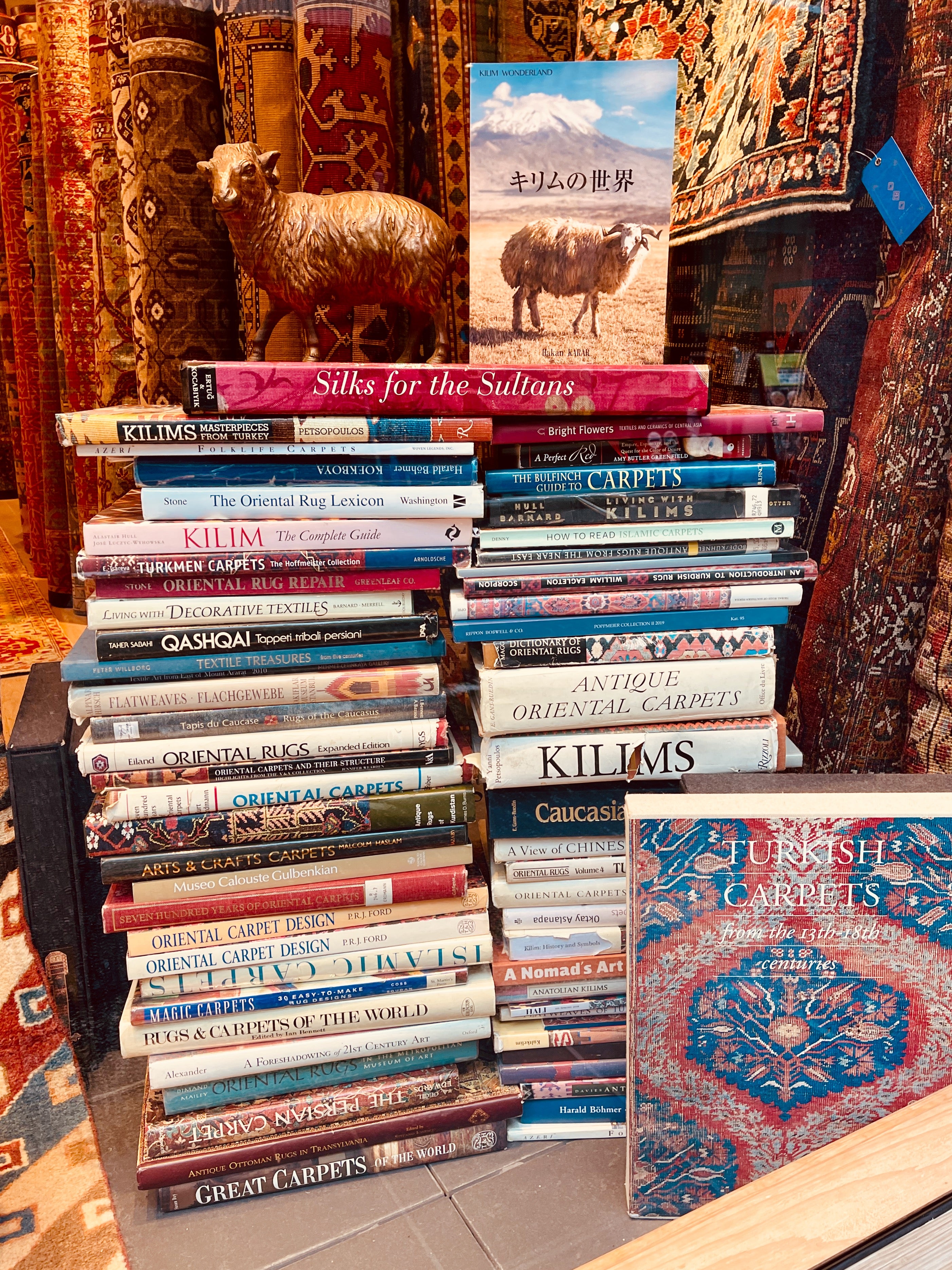Items Similar to Vintage Kars Kilim Rug Old Anatolian Turkish Carpet
Want more images or videos?
Request additional images or videos from the seller
1 of 5
Vintage Kars Kilim Rug Old Anatolian Turkish Carpet
About the Item
This is an Eastern Anatolian Vintage Kilim from the Kars region with a rare and beautiful color composition.
The old sector and newer southern districts of Kars are joined by a bridge built by the Seljuk Turks over the Kars Cayi River. The town was occupied by an independent Armenian group during the ninth and tenth centuries AD, by the Seljuks from the eleventh to the thirteenth century, and by the Mongols for part of the thirteenth century. Incorporated into the Ottoman Empire in the early fifteenth century, the town saw many further rulers from the eighteenth century onwards, being invaded firstly by Iran, then by the Russians before being returned to Turkey in 1918. Despite severe winters, the surrounding area is used for arable farming and raising livestock and is well known for its cheese production. Kilims woven since 1950 are distinctive for their natural brown wool warps and for their dull coloring of browns, oranges, and pinks, as well as for their long and narrow shape. Because of their impractical Size, many have ended up being made into fashion accessories in the West. Designs are geometric and are woven in slitweave with thick warps that result in coarsely woven rugs with long fringes. Many çuval and yastiks are woven in the Kars region. The older kilims from this area are usually attributed to Kagizman. They are very different from the later weavings of Kars, as they were closer woven and used mainly natural dyes. Kars and Kagizman kilims often feature geometric medallions, some similar to Caucasian designs. Prayer kilims were also woven, although less so in recent years, and generally of a larger Size than most. A pale blue ground is sometimes favored for the niche itself. Kagizman kilims have a dark and rich palette of browns, reds, blues, greens, and yellow; prayer kilims are generally lighter in tone.
- Dimensions:Width: 70.87 in (180 cm)Length: 115.75 in (294 cm)
- Style:Kilim (In the Style Of)
- Materials and Techniques:
- Place of Origin:
- Period:
- Date of Manufacture:circa 1950
- Condition:Repaired: Minor repairs, with antique natural dyed wool threads by our repair specialists. Wear consistent with age and use. Minor fading.
- Seller Location:Tokyo, JP
- Reference Number:1stDibs: LU8206233497612
ARARAT RUGS
We know and believe that the geography we come from, our past, and our lifestyle are the most important bond between us to carry the oriental carpet art and culture to the next generations along with our core values in our ongoing growth journey.
We are aware that the way to achieve this goal and carry this priceless art and culture to the future depends on a lot of work with all our people every day while adhering to our core values.
For us, art is meaningful in the sense that it brings together various cultures around the world. It is an honor for us that oriental carpet art and culture have been instrumental in this for centuries and that we are a part of this business.
We are tirelessly keeping an eye on auction house information around the world about carpets. New York's Metropolitan, London's Victoria & Albert Museums, and other famous art museums, as well as small specialized museums that house private collections, and books about oriental carpets to collect information on outstanding carpet designs and patterns from around the world. It's our Self-improving and Self-developing culture.
As Turkish Culture of Hospitality, the Kurdish Culture of Generosity, and as Japanese Culture of Business Punctuality; are the most important values that this multicultural background has taught and bequeathed to us. It is essential and valuable for us that you feel this feeling not only by looking at our oriental carpets but from the moment you contact us.
About the Seller
5.0
Gold Seller
These expertly vetted sellers are highly rated and consistently exceed customer expectations.
Established in 1970
1stDibs seller since 2023
12 sales on 1stDibs
Typical response time: <1 hour
- ShippingRetrieving quote...Ships From: Tokyo, Japan
- Return PolicyA return for this item may be initiated within 7 days of delivery.
More From This SellerView All
- Vintage Erzurum Kilim Rug Old Anatolian Turkish CarpetLocated in Tokyo, JPThis is an Eastern Anatolian Vintage Old Kilim from the Erzurum region with a rare and beautiful color composition. Erzurum was once a key frontier town, used to defend Anatolia a...Category
Mid-20th Century Turkish Kilim Turkish Rugs
MaterialsWool, Natural Fiber
- Vintage Antalya Kilim Rug Old Anatolian Turkish CarpetLocated in Tokyo, JPThis is a South Anatolian old vintage Kilim from the Antalya region with a rare and beautiful color composition. Founded in 200 BC by Attalus II, king of Pergamum, Antalya, then named Attaleia, has always been a bustling port. During the Crusades, the town was used for the embarking of troops on their way to Palestine, as it was a Byzantine stronghold at Antalya that was captured by Seljuks in the early 12th century, and late in the 15th century it became part of the Ottoman Empire. There are many interesting monuments in the town such as the Hadrian Gate, a three-arched marble portal...Category
Mid-20th Century Turkish Kilim Turkish Rugs
MaterialsWool, Natural Fiber
- Vintage Malatya Kilim Rug Old Anatolian Turkish CarpetLocated in Tokyo, JPThis is a South Eastern Anatolian old vintage Kilim from the Malatya region with a rare and beautiful color composition. Malatya is Turkey's main kilim production area, and there are many variations. This is one of them, a runner-type kilim. The thread is thin and the weave is very fine and dense. Some metallic threads are used in this antique kilim, which is rarely seen in Anatolian kilims. Red, navy blue, and gray are the colors that determine the impression of this kilim. Other colors such as brown, yellow, and light blue are also used in the patterns. The wavy horizontal striped pattern, plain pattern, and lined motif pattern are woven together to create a kilim that looks like an obi. The pattern of the motif and the pattern of the wave are about the same amounts, giving a lively impression without getting busy. The deep shades of colors and patterns that are familiar to each other are unique to antiques. However, it still retains good coloring which makes it hard to believe that it is antique. The runner type is a good type to make this kilim unique. Also, for those who want to create a different kind of home, the use of runners is very effective. Malatya is a town built on one main street that continues for several miles. It is situated in the Tohmasuyu River basin which is encircled by the high peaks of the eastern Taurus Mountains. This is a fertile agricultural region, particularly for apricots, and has been a prolific weaving area for many years. The modern town was established in 1838; old Malatya, which is close by, was once an important city in Armenia Minor. In Roman times it was important as a garrison town on the eastern frontier, and the settlement came under Ottoman rule in the early fifteenth century. Considering the number of kilims woven in this region there is a surprising lack of diversity in design, especially in the larger kilims; this is possibly a direct result of the Kurdish tribal tradition of weaving only one type of design. Small prayer rugs...Category
Mid-20th Century Turkish Kilim Turkish Rugs
MaterialsWool, Natural Fiber
- Vintage Malatya Kilim Rug Old Anatolian Turkish CarpetLocated in Tokyo, JPThis is a South Eastern Anatolian old vintage Kilim from the Malatya region with a rare and beautiful color composition. Malatya is a town built on one main street that continues for several miles. It is situated in the Tohmasuyu River basin which is encircled by the high peaks of the eastern Taurus Mountains. This is a fertile agricultural region, particularly for apricots, and has been a prolific weaving area for many years. The modern town was established in 1838; old Malatya, which is close by, was once an important city in Armenia Minor. In Roman times it was important as a garrison town on the eastern frontier, and the settlement came under Ottoman rule in the early fifteenth century. Considering the number of kilims woven in this region there is a surprising lack of diversity in design, especially in the larger kilims; this is possibly a direct result of the Kurdish tribal tradition of weaving only one type of design. Small prayer rugs...Category
Mid-20th Century Turkish Kilim Turkish Rugs
MaterialsWool, Natural Fiber, Organic Material
- Vintage Afyon Kilim Western Anatolian Rug Old Turkish CarpetLocated in Tokyo, JPThis is Western Anatolian Vintage Kilim from the Afyon region with a rare and beautiful color composition. This highly collectible antique kilim has a wonderful special color and t...Category
Mid-20th Century Turkish Kilim Turkish Rugs
MaterialsWool, Natural Fiber
- Old Kayseri Kilim Central Anatolian Rug Turkish CarpetLocated in Tokyo, JPThis is a Central Anatolian Old Kilim from the Kayseri region with a rare and beautiful color composition. The earliest recorded occupation of Kayseri dates back to Hellenistic ti...Category
Mid-20th Century Turkish Kilim Turkish Rugs
MaterialsWool, Natural Fiber
You May Also Like
- Vintage Turkish Anatolian CarpetLocated in New York, NYA vintage Turkish Anatolian carpet from the mid-20th century.Category
Mid-20th Century Turkish Tribal Turkish Rugs
MaterialsWool
- Vintage Turkish Anatolian CarpetLocated in New York, NYA vintage Turkish Anatolian carpet from the mid-20th century with cotton highlights.Category
Mid-20th Century Turkish Oushak Turkish Rugs
MaterialsWool, Cotton
- Vintage Turkish Anatolian CarpetLocated in New York, NYA vintage Turkish Anatolian carpet from the mid-20th century.Category
Mid-20th Century Turkish Tribal Turkish Rugs
MaterialsWool
- Vintage Turkish Anatolian RugLocated in New York, NYA vintage Turkish Anatolian rug from the mid-20th century. Measures: 7' 3" x 9' 2".Category
Mid-20th Century Turkish Tribal Turkish Rugs
MaterialsWool
- Vintage Turkish Sharkoy Kilim RugLocated in Torquay, GBVintage Turkish Sharkoy Kilim rug. Large sized 325cm x 225cm Monumental large area rug measuring over 3metres wide. Beautiful Ikat pattern with vibrant colours. Tightly woven cott...Category
Mid-20th Century Turkish Kilim Turkish Rugs
MaterialsCotton
- Vintage Turkish Anatolian Pictorial RugLocated in New York, NYA vintage Turkish Anatolian pictorial rug from the mid-20th century. A self-taught artist has depicted six buildings and one smokestack in a co...Category
Mid-20th Century Turkish Folk Art Turkish Rugs
MaterialsWool
Recently Viewed
View AllMore Ways To Browse
Long Fringe
Old Vintage Saws
Saw Vintage
Vintage Saw
Up Lighter
Vintage Ad
Large Vintage Lighter
Vintage Sector
Pale Yellow Rug
Retro Orange Ottoman
Natural Color Vintage Rug Large
Old Fashioned Vintage Study Room
Old Fashioned Vintage Dining Room
Old Vintage Hand Saws
Retro Pink Ottoman
Yellow Large Kilim
Old Vintage Lighters
Old Lighters Vintage Lighters
